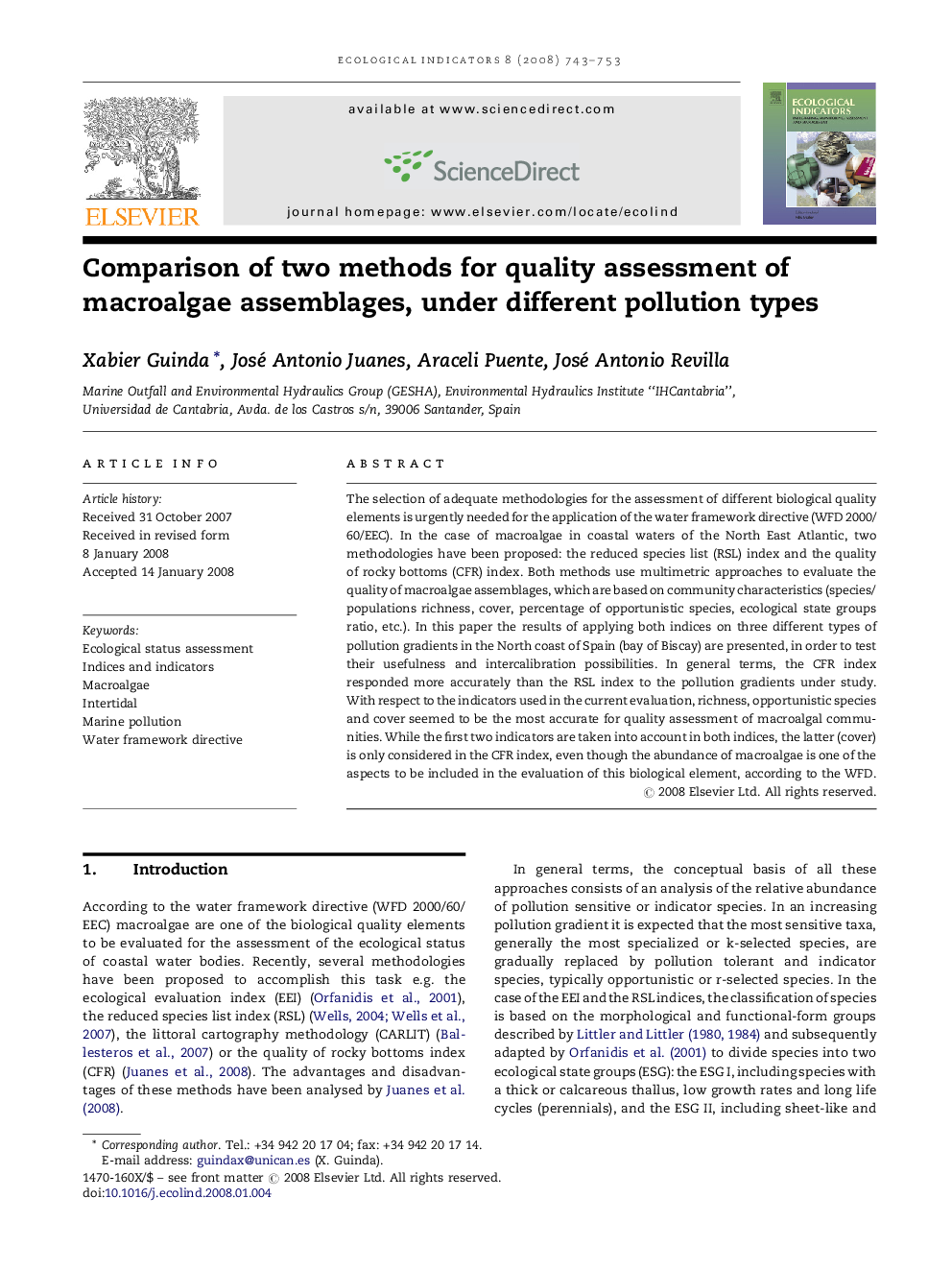| Article ID | Journal | Published Year | Pages | File Type |
|---|---|---|---|---|
| 4374417 | Ecological Indicators | 2008 | 11 Pages |
The selection of adequate methodologies for the assessment of different biological quality elements is urgently needed for the application of the water framework directive (WFD 2000/60/EEC). In the case of macroalgae in coastal waters of the North East Atlantic, two methodologies have been proposed: the reduced species list (RSL) index and the quality of rocky bottoms (CFR) index. Both methods use multimetric approaches to evaluate the quality of macroalgae assemblages, which are based on community characteristics (species/populations richness, cover, percentage of opportunistic species, ecological state groups ratio, etc.). In this paper the results of applying both indices on three different types of pollution gradients in the North coast of Spain (bay of Biscay) are presented, in order to test their usefulness and intercalibration possibilities. In general terms, the CFR index responded more accurately than the RSL index to the pollution gradients under study. With respect to the indicators used in the current evaluation, richness, opportunistic species and cover seemed to be the most accurate for quality assessment of macroalgal communities. While the first two indicators are taken into account in both indices, the latter (cover) is only considered in the CFR index, even though the abundance of macroalgae is one of the aspects to be included in the evaluation of this biological element, according to the WFD.
